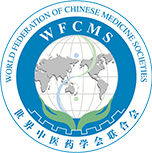Extraction, purification, and anti-Inflammatory activity of steroid fraction from Physalis Alkekengi L. Var. Franchetii (Mast.) makino
Release time: Aug 29,2023
Reading volume: 677
Objective: As a traditional medicinal plant listed in the Chinese Pharmacopeia, Physalis alkekengi L. var. franchetii (Mast.) Makino (PAF) has a long medicinal history and high economic value. PAF has immunomodulatory properties and can be used to treat acute lung injury and eczema. The aim of this study is to solve the problems of extraction and purification of active components from PAF.
Materials and Methods: The solvent to be used for extraction and its concentration, the solid-to-liquid ratio, and extraction duration were investigated using a single-factor experiment. An orthogonal design (L9[34]) was used to determine the optimum extraction conditions. After optimization, the sample's concentrations and flow velocity, the eluents and their velocity, adsorption time, and the removed water volume were measured. The content of the five steroids in the sample was determined by high-performance liquid chromatography (HPLC). We also investigated the anti-inflammatory property of PAF calyxes before and after purification.
Results: The optimum extraction and purification processes were determined by single-factor analysis. AB-8 was identified as the best macroporous adsorption resin for enrichment. After optimization, the average total steroid content was 71.83%, and the average recovery was 90% after purification. Among the five steroid components detected by HPLC, physalin F showed the highest content. Furthermore, the sample obtained after purification could significantly inhibit paw edema by egg whites induced.
Conclusions: An environmentally-sustainable, efficient, and stable process was first optimized for enriching and purifying total steroids from PAF. The process has the potential for further development and utilization in the pharmaceutical industry.
Materials and Methods: The solvent to be used for extraction and its concentration, the solid-to-liquid ratio, and extraction duration were investigated using a single-factor experiment. An orthogonal design (L9[34]) was used to determine the optimum extraction conditions. After optimization, the sample's concentrations and flow velocity, the eluents and their velocity, adsorption time, and the removed water volume were measured. The content of the five steroids in the sample was determined by high-performance liquid chromatography (HPLC). We also investigated the anti-inflammatory property of PAF calyxes before and after purification.
Results: The optimum extraction and purification processes were determined by single-factor analysis. AB-8 was identified as the best macroporous adsorption resin for enrichment. After optimization, the average total steroid content was 71.83%, and the average recovery was 90% after purification. Among the five steroid components detected by HPLC, physalin F showed the highest content. Furthermore, the sample obtained after purification could significantly inhibit paw edema by egg whites induced.
Conclusions: An environmentally-sustainable, efficient, and stable process was first optimized for enriching and purifying total steroids from PAF. The process has the potential for further development and utilization in the pharmaceutical industry.

